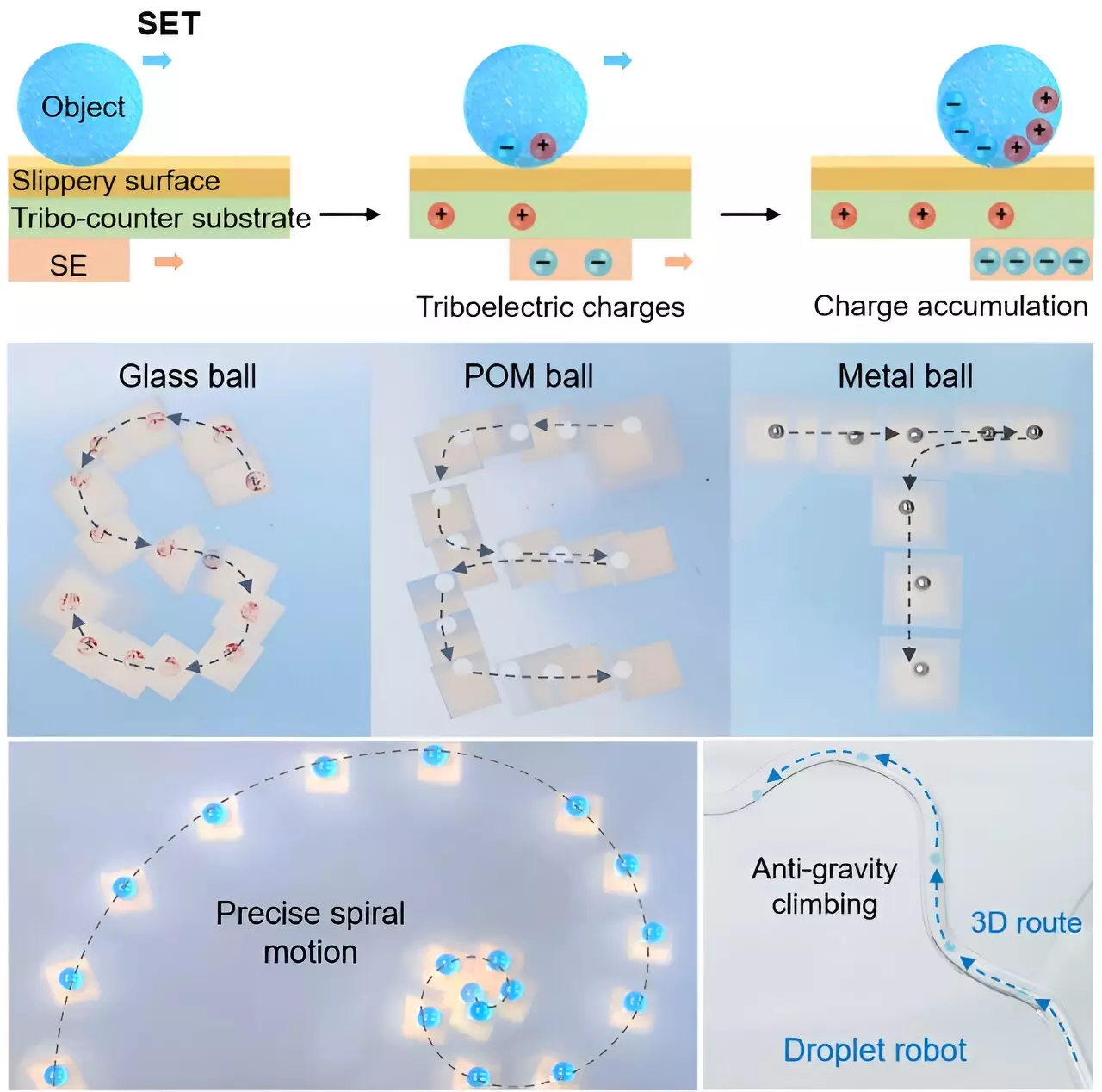In a groundbreaking advancement in the realm of material manipulation, researchers from the Shenzhen Institute of Advanced Technology have unveiled a self-powered electrostatic tweezer (SET) that promises transformative capabilities across various scientific disciplines. Led by Dr. Du Xuemin, this innovation paves the way for a new era where the limits of traditional tweezers are thoroughly challenged. The conventional methods have relied heavily on intricate electrode arrays and external power sources, which not only complicate but also restrict the application range of object manipulation tools in physics, chemistry, and biology.
A Leap Forward in Charge Generation
What sets the SET apart from its predecessors is its innovative backbone—comprising a polyvinylidene fluoride trifluoroethylene (P(VDF-TrFE))-based self-powered electrode. This design harnesses the triboelectric effect to generate a robust and tunable surface charge density, reaching impressive levels of approximately 40 nC cm-2 within mere seconds of operation. This remarkable charge generation capability is not merely a benign improvement; it fundamentally alters how researchers and engineers can approach the manipulation of materials, enabling unprecedented control over diverse object types, such as bubbles, solid spheres, and even liquid droplets.
Remarkable Stability and Performance
Another standout feature of the SET is its impressive operational stability. The researchers documented the device’s capacity to maintain high charge density even after enduring 1,000 sliding cycles, signifying its resilience for prolonged tasks. Moreover, the SET’s stored charge density exhibited remarkable longevity, remaining stable for over five hours at ambient room conditions with moderate humidity. This reliability ensures that users can depend on the tweezers in various real-world applications, reducing the uncertainty often present in experimental setups.
Implications for Diverse Applications
The implications of SET’s versatile design are monumental. From droplet manipulation to cell assembly and pump-free microfluidics, the ease with which these tweezers can handle multiple objects in differing environments is groundbreaking. The researchers have demonstrated its effectiveness on both flat and complex surfaces, addressing crucial areas such as droplet splitting and merging, which hold importance in fields ranging from nanotechnology to biomedical science. The adaptability of the SET to different contexts—from open settings to confined spaces—enhances its appeal and utility in a myriad of applications.
Enhancing Efficiency in Microfluidics and Beyond
Eliminating the dependency on elaborate electrode arrangements and external energy sources, the SET signifies a paradigm shift in microfluidics and material manipulation technologies. The potential to lead to simpler, more efficient platforms for researchers is immense. In an age where precision and adaptability are paramount, the SET stands ready to reshape our understanding and capabilities in scientific inquiry. This advancement does not merely symbolize technological progress; it embodies a fundamental shift in how we interact with physical materials at the micro and nano scales, ushering in new possibilities for future innovations.


Leave a Reply